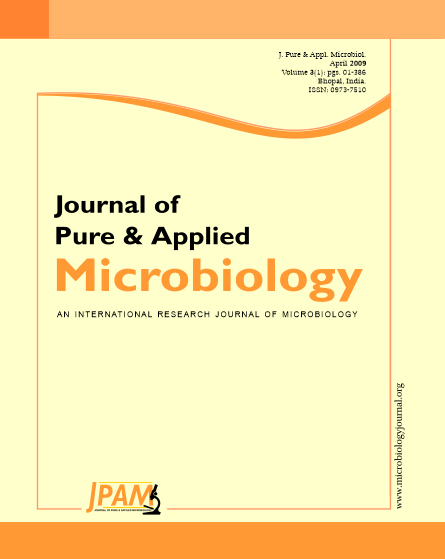From 20 isolates representating one strain of Vibrio alginolyticus isolated from Penaeus monodon were selected for the genotyping properties using RAPD-PCR. The strains were isolated from different organs as haepatopancreas, external surface, pleopod and telson from prawn and confirmed on Thiosulphate-Citrate Bilesalt-Sucrose agar with supplemented with 2% NaCl. For the RAPD study, 10 decamer random primers e.g. OPA, OPB, OPC, OPG, OPH were used for screening. Out of 100 primer tested only 34 primers shows amplification of the genomic genomic DNA of V. alginolyticus with more than 4 bands. Maximum no of bands were produced by OPA 20 i,e 15. DNA finger printing pattern of V.alginolyticus showed 3-15 polymorphic bands in 5 series of selected primers. Their molecular weight ranging from 0.212-5.238 kbp. RFLP analysis has been widely developed as an effective and sensitive method for strain identification. Out of 34 primers of RAPD-PCR only 9 primers of OPA (2, 4, 6, 18 and 20) and OPG series (3, 4, 11) shows RFLP product. PCR-RFLP finger printing pattern of
V. alginolyticus showed 1-6 polymorphic bands in 2 series (OPA, OPG) of selected primers and their molecular weight ranging from 0.510-3.867 kbp. RAPD and RFLP technique appeared to be a reliable and fast technique for genomic study of Vibrio alginolyticus on the basis of their form of isolation and therefore, represents a powerful tool for epidemiological studies of these prawn pathogens.
DNA fingerprinting, RAPD-PCR, RFLP, Vibrio alginolyticus
© The Author(s) 2009. Open Access. This article is distributed under the terms of the Creative Commons Attribution 4.0 International License which permits unrestricted use, sharing, distribution, and reproduction in any medium, provided you give appropriate credit to the original author(s) and the source, provide a link to the Creative Commons license, and indicate if changes were made.


